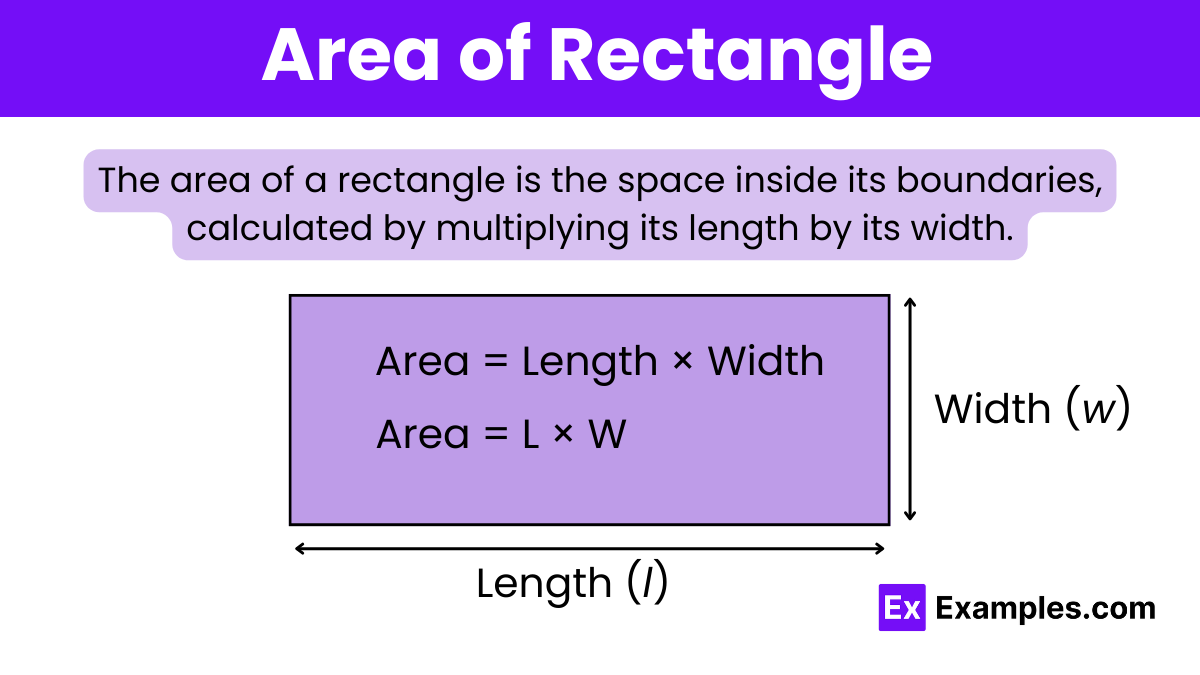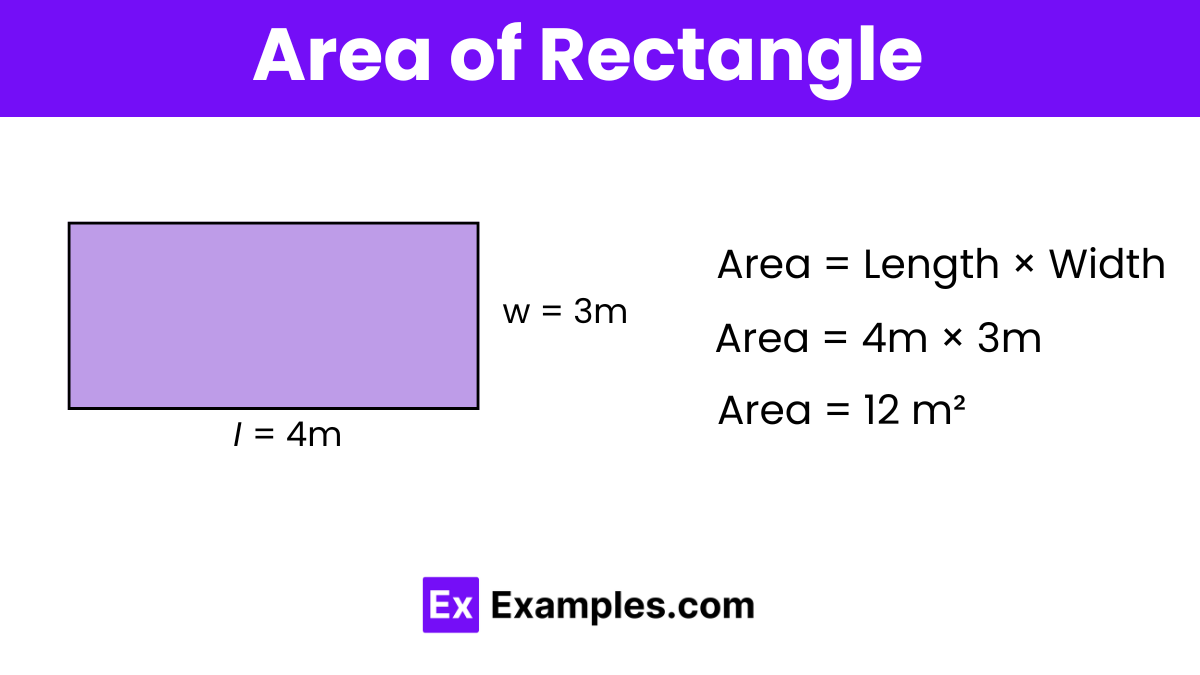If the length of a rectangle is 10 meters and the width is 5 meters, what is the area?
40 square meters
50 square meters
60 square meters
70 square meters


The area of a rectangle is the space inside its four sides. It tells us how much surface the rectangle covers. You can figure out this area with a special formula, depending on the rectangle’s length and width. In this lesson, we’ll learn how to calculate the area of a rectangle using different methods based on the measurements we have.
The formula to calculate the area of a rectangle is straightforward: multiply the length of the rectangle by its width. This is expressed mathematically as:
This formula provides the area in square units, based on the units used for length and width, whether they are in meters, feet, or another measure. This calculation is essential for determining how much space a rectangle covers, useful in various practical scenarios like flooring a room or covering a wall with paint.
Suppose a rectangle has a length of 8 meters and a width of 3 meters.
Calculate the area:
Using the formula: Area = 4 meters × 3 meters = 12 square meters
So, the area of this rectangle is 24 square meters. This tells you how much space the rectangle covers.

To calculate the area of a rectangle using the diagonal, you need to know both the length of the diagonal and either the length or the width of the rectangle. This method involves a bit of geometry, specifically the Pythagorean theorem, because the diagonal divides the rectangle into two right triangles.
Example: Calculate the area of a rectangle with a width of 5 cm and a diagonal of 13 cm.
Solution:
Example: Calculate the area of a rectangle where the length is 8 units, and the diagonal is 17 units.
Solution:
Both methods will help you calculate the area of a rectangle when the diagonal and one side length are known, using basic geometry principles and simple arithmetic.
To calculate the area of a rectangle when you know the perimeter and one side, you first find the unknown side and then use that to calculate the area. Let’s go through an example to make this clear.
Example: Calculate the area of a rectangle where the perimeter is 24 units and the length is 7 units.
Solution:
Multiply the length by the width of the rectangle. Use the formula: Area = Length × Width to determine the rectangle’s area.
Area is calculated by multiplying length by width. Perimeter is found by adding twice the length and twice the width: Perimeter = 2(Length + Width).
Assuming the box is rectangular, calculate the area of one side using the formula for a rectangle’s area, then multiply by the number of sides.
Technically, for a three-dimensional shape (rectangular prism), the volume is Length × Width × Height.
Area: Multiply length by width. Volume (for a 3D rectangle, or prism): Multiply length by width by height. Use these formulas respectively for each calculation.
Text prompt
Add Tone
10 Examples of Public speaking
20 Examples of Gas lighting
If the length of a rectangle is 10 meters and the width is 5 meters, what is the area?
40 square meters
50 square meters
60 square meters
70 square meters
A rectangle has a length of 8 meters and a width of 6 meters. What is its area?
40 cm²
46 m²
48 m²
50 m²
Calculate the area of a rectangle with dimensions 12 meters by 4 meters.
42 m²
44 m²
46 m²
48 m²
A rectangle has an area of 72 square feet and a length of 9 feet. Find the width.
6 ft
7 ft
8 ft
9 ft
Find the area of a rectangle with a length of 15 inches and a width of 7 inches.
90 in²
100 in²
110 in²
105 in²
A rectangular garden measures 20 meters in length and 10 meters in width. Calculate its area.
150 m²
200 m²
250 m²
300 m²
The area of a rectangle is 64 square centimeters, and its width is 8 centimeters. Find the length.
8 cm
9 cm
10 cm
11 cm
A rectangle has a width of 12 meters and an area of 84 square meters. What is the length?
6 m
7 m
8 m
9 m
Calculate the area of a rectangle with a length of 14 inches and a width of 5 inches.
60 in²
65 in²
66 in²
70 in²
The area of a rectangular room is 150 square feet, and its width is 10 feet. Find the length.
10 ft
12 ft
13 ft
15 ft
Before you leave, take our quick quiz to enhance your learning!

